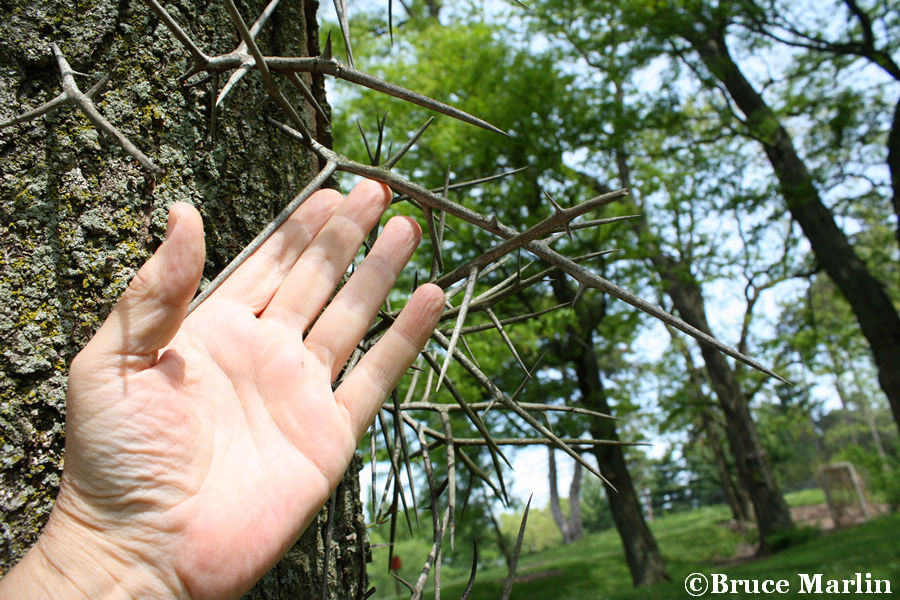Honey Locust – Gleditsia triacanthos
 Japanese locust thorns; ancient defense mechanism has been bred out of many modern species
Japanese locust thorns; ancient defense mechanism has been bred out of many modern species
This ancient tree has lost its wild thorns and giant seedpods as a result of man’s careful cultivation.
The thornless honey locust has been an exceptionally popular tree for all types of landscapes. Small leaves on the open canopy allow pleasantly dappled light to reach the ground. The ability to grow grass under these trees has helped them reach the popularity they now enjoy.
This huge honey locust is one of Joy Morton’s original plantings of 1923. Variation ‘inermis’
Unfortunately, numerous pests and diseases have infiltrated populations of honey locusts, and popularity has declined. The trees produce dark-brown seed pods that can be a maintenance headache. They are easily transplanted and are adaptable to a wide soil range. Fruitless varieties are available with varying resistance to the numerous problems from which the species now suffers.
Honey locust seed-pods and tiny leaves can present an annoying litter problem; shallow roots are easily damaged
Summer: The pinnately compound leaves (one large stem with many small leaflets) allow filtered sunlight, making an attractive canopy that is practical for growing grass or other plants below. Fall: Color in the fall is variable but is usually a shade of yellow and can be very nice. The large seedpods ripen and become a maintenance consideration for most of the fall and winter months. Wildlife cherishes the sweet pods from which the tree gets its name. The thorny specimen (Gleditsia triacanthos) from which this variety arose is one of the thorniest trees found. Thorns can protrude directly from the trunk and be a foot or more in length. Crews have been busy two decades at the University of Illinois at Urbana-Champaign taking down diseased honeylocust trees that were once planted to replace the declining American elms.
The native thorny species is found in Illinois, on either side of the Mississippi River from Nebraska to Texas and from Pennsylvania to Alabama. Fence rows and pastures are common locations.
References
1. Colorado State University, “Sunburst Honey locust (Gleditsia triacanthos ‘Sunburst’)”
2. Thornless Honey Locust photos by Bruce Marlin

